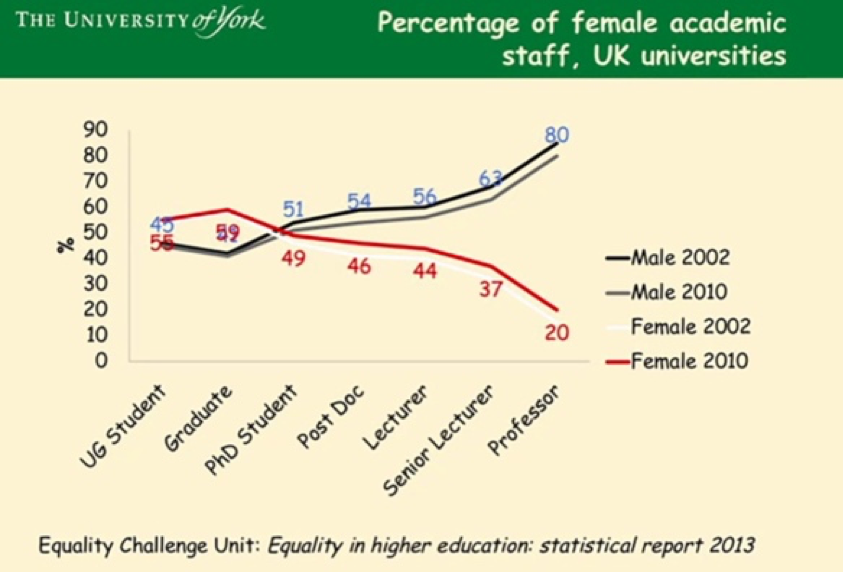Nowadays, many conferences and workshops are going online because of the pandemic, and we all are ill-prepared for this kind of shift forced upon us. Delivering an online presentation is very different from delivering an in-person presentation, for a few reasons, and we need cognizant of the nuances.
While many talks are indeed disastrous (people lack proper training), going to a conference is often not only about the content of the talks (you could just read the papers), but about visual and vocal cues which are often absent from literature. These cues help you figure out what are the important points and make clear what what other people are interested in.Therefore, it is important to establish and maintain contact with the audience. For this, there are many things we can learn from news anchor: they also talk to the camera, they have dedicated studios and they alternate between speaking and news content.I attended an online workshop by Jean-Luc Doumont on delivering an online presentation, and I found it useful. Here are some of my takeaways. Continue readingSubluminal
Slower than the speed of light, but not by much
Category Archives: science life
It’s getting pretty crammed at the bottom
Let us represent a dot by a small spot of one metal, the next dash by an adjacent spot of another metal, and so on. Suppose, to be conservative, that a bit of information is going to require a little cube of atoms 5 x 5 x 5 – that is 125 atoms. Perhaps we need a hundred and some odd atoms to make sure that the information is not lost through diffusion, or through some other process.
– Richard Feynman
Spoiler alert: we are nearly there!
* *
These very old line (1959) fro Feynman’s famous speech “There’s Plenty of Room at the Bottom” is still valid, though nowadays are getting very close to the bottom!With my colleague Gautam Gunjala, we published an article in Berkeley Science Review on the ongoing contributions of UC Berkeley and Berkeley Lab to photolithography, the process of making microchips: Room to Shrink.It was supposed to be part of the BSR Issue 38 (Spring 2020) but I guess it got covided.
Here are other pieces from yours truly on the topic:- Moore’s wall, on Moore’s law and why
- SHARP & MET5 – EUV Lithography at Lawrence Berkeley National Laboratory, on the specifics of our contribution to the development of EUV lithography at Berkeley Lab, the upcoming generation in semiconductor manufacturing
Also:
The topic is getting red hot politically:Lawmakers Propose Multibillion Dollar Semiconductor R&D Push (American Institute of Physics, June 24, 2020)if not down right nasty:
Trump administration pressed Dutch hard to cancel China chip-equipment sale: sources (Reuters, January 2, 2020) Continue reading
Graph alignment chart
There are many ways to document research, and some are better than others.
Make beautiful graphs : only start to write when you have the best data our group can get.
– Paul Alivisatos
Here’s my graph alignment chart, curated from personal experience.
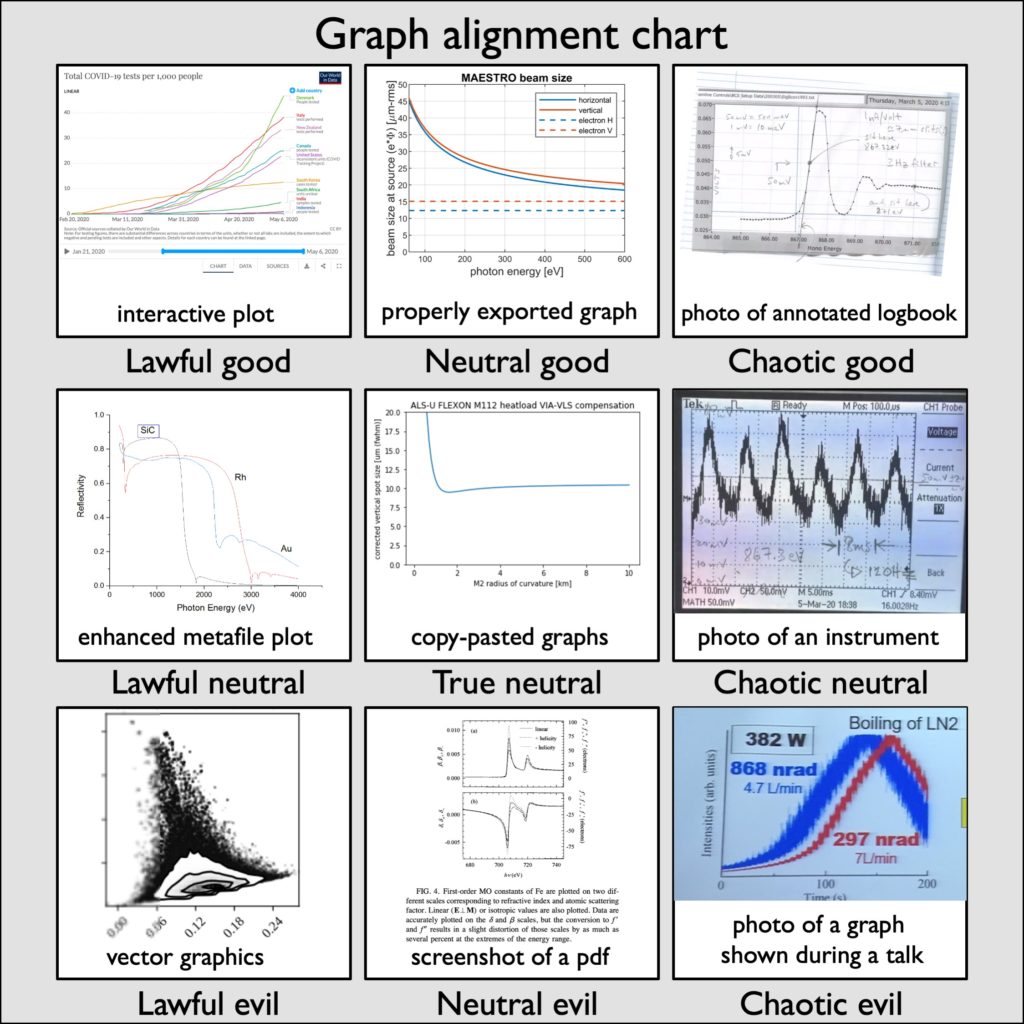 Continue reading
Continue reading
Earth Day
Today is Earth Day, a celebration of Earth and the environment started fifty years ago. This year, as the covid-19 pandemic upends the regular unfolding of the world, we can step back and ask how what we learn from the current crisis can help us scientists make science better and more efficient to curb climate change and its consequences.
 Here’s a set of eight question to ponder about this, and some preliminary thoughts gleaned during a forum@ESA.1. The interdependence of the supply chain has become very apparent. Can we make the case for renewable energy in terms of resilience of systems?Solar energy is the only form of energy available everywhere on the planet: all others need to be transported and transferred. Geothermal energy should also be tapped (it is essentially low grade solar energy!)2. The dramatic reduction of activity in urban centers has brought back clean air in some cities for the first time in decades. Can we envision a world without emission, from energy production to energy use?Cars on the road have the most impact – we need to switch to switch transportation modes. We could have electrical energy on tracks, some flavor of autonomous driving could quickly provide modular transportation schemes. We also need to change how some cities are built, to make it easier to have common transportation (relative location of schools, business and housing)3. The current covid-19 crisis is global, and scientists have broken paywalls and started new collaborations with their peers around the globe. What can we learn from this, and promote meaningful collaborations?Open Access is on the rise (Project DEAL, Plan S, White House Open Access plan.) Wikipedia is a great resource, completely under-used; it seems that it stems from the issue of ownership (who gets to write on who? and who gets the credit for this work?) We can also rethink research tools, to make them more efficient and more collaborative. The way academia is organized (race to tenure, etc.) may hamper collaboration and therefore innovation.4. The global economy has been hit severely, and it will be important to promote new economic activity when the outbreak will be over. How can energy technologies inform policies and shape capital projects?We could build mass transportation system, with initiatives similar to the New Deal (infrastructure is manual labor intensive.) Science can help to find which are the most effective or efficient ways (data science and machine learning.) Scientists could work in tandem with civil engineers, maybe using their school network to reconnect. There should be incentives for scientists to do so.5. The disruption school year has taken a toll on kids and parents alike. How can scientists engage with students, when the distance is measured in bits per seconds rather than miles?It would be good to reuse and repurpose older devices. There could be an open OS for discarded devices that would provide minimal functions (video conferencing, calculator, etc.) Scientists should also learn to mentor without physical presence (though one-on-one interaction is important), and therefore allow more frequent interactions, over larger distances.6. When resources are lacking – masks, ventilators,– engineers and scientists devise creative ways to fill the need using available resources and altering them. How could we repurpose existing facilities to help with climate change?7. The shelter-in-place is difficult to negotiate, but as anthropogenic emission of CO2 affects the environment, it may become routine. How can we fix the harm done using science and technology?8. There is a lot of contradictory information being circulated around the epidemic. How can scientists help disseminate information and prevent the spread of alternative facts? In addition, here are some historical and current resources on Climate Change:
Here’s a set of eight question to ponder about this, and some preliminary thoughts gleaned during a forum@ESA.1. The interdependence of the supply chain has become very apparent. Can we make the case for renewable energy in terms of resilience of systems?Solar energy is the only form of energy available everywhere on the planet: all others need to be transported and transferred. Geothermal energy should also be tapped (it is essentially low grade solar energy!)2. The dramatic reduction of activity in urban centers has brought back clean air in some cities for the first time in decades. Can we envision a world without emission, from energy production to energy use?Cars on the road have the most impact – we need to switch to switch transportation modes. We could have electrical energy on tracks, some flavor of autonomous driving could quickly provide modular transportation schemes. We also need to change how some cities are built, to make it easier to have common transportation (relative location of schools, business and housing)3. The current covid-19 crisis is global, and scientists have broken paywalls and started new collaborations with their peers around the globe. What can we learn from this, and promote meaningful collaborations?Open Access is on the rise (Project DEAL, Plan S, White House Open Access plan.) Wikipedia is a great resource, completely under-used; it seems that it stems from the issue of ownership (who gets to write on who? and who gets the credit for this work?) We can also rethink research tools, to make them more efficient and more collaborative. The way academia is organized (race to tenure, etc.) may hamper collaboration and therefore innovation.4. The global economy has been hit severely, and it will be important to promote new economic activity when the outbreak will be over. How can energy technologies inform policies and shape capital projects?We could build mass transportation system, with initiatives similar to the New Deal (infrastructure is manual labor intensive.) Science can help to find which are the most effective or efficient ways (data science and machine learning.) Scientists could work in tandem with civil engineers, maybe using their school network to reconnect. There should be incentives for scientists to do so.5. The disruption school year has taken a toll on kids and parents alike. How can scientists engage with students, when the distance is measured in bits per seconds rather than miles?It would be good to reuse and repurpose older devices. There could be an open OS for discarded devices that would provide minimal functions (video conferencing, calculator, etc.) Scientists should also learn to mentor without physical presence (though one-on-one interaction is important), and therefore allow more frequent interactions, over larger distances.6. When resources are lacking – masks, ventilators,– engineers and scientists devise creative ways to fill the need using available resources and altering them. How could we repurpose existing facilities to help with climate change?7. The shelter-in-place is difficult to negotiate, but as anthropogenic emission of CO2 affects the environment, it may become routine. How can we fix the harm done using science and technology?8. There is a lot of contradictory information being circulated around the epidemic. How can scientists help disseminate information and prevent the spread of alternative facts? In addition, here are some historical and current resources on Climate Change:
- Silent Spring, Rachel Carson
- Soft Energy path, Amory Lovins
- Sustainable Energy without The Hot Air, David McKay
- Laudato Si, Pope Francis
- Powering the Dream, Alexis Madrigal
I also made a thread about Berkeley Lab Art Rosenfeld on his Art of Energy Efficiency.
Continue readingLight sources around the world
Over the last two years, I had a chance to visit a few synchrotron around the world!
Here’s my fav list:- Best view:@advlightsource
- Best music:@advancedphoton
- Best location:@synchroSOLEIL
- Best architecture: Swiss Light Source @psich_en
- Best interior design:@elettrasincro
- Best food: Taiwan Photon Source #NSRRC
Now I need to visit:
- Diamond Light Source (near Oxford, UK),
- MaxIV (Lund, Sweden) and the
- European Synchrotron Radiation Facility (Grenoble, France)
 SOLEIL synchrotron (near Paris, France)
SOLEIL synchrotron (near Paris, France)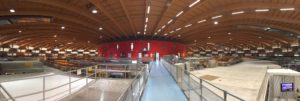 Swiss Light Source (Paul Scherrer Institute, near Zurich)
Swiss Light Source (Paul Scherrer Institute, near Zurich)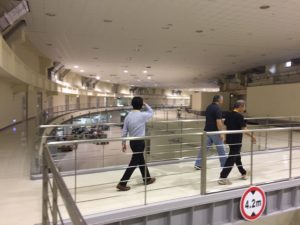 Taiwan Photon Source (Hsinchu, Taiwan)
Taiwan Photon Source (Hsinchu, Taiwan) Elettra sincotrone (Trieste, Italy) – with Luca Gregoratti
Elettra sincotrone (Trieste, Italy) – with Luca Gregoratti Advanced Photon Source, Argonne National Laboratory (near Chicago, IL) – with Gautam Gunjala (UC Berkeley)
Advanced Photon Source, Argonne National Laboratory (near Chicago, IL) – with Gautam Gunjala (UC Berkeley)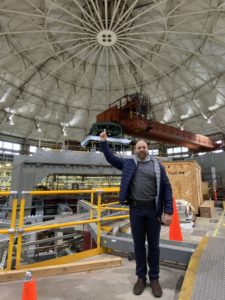 Advanced Light Source Lawrence Berkeley National Lab (near San Francisco, CA) – with Claudi Mazzoli (from NSLS-II, Brookhaven)
Advanced Light Source Lawrence Berkeley National Lab (near San Francisco, CA) – with Claudi Mazzoli (from NSLS-II, Brookhaven)
Hard Duino
I was in Trieste for a conference, and one afternoon after the conference was finished I went 20 minute North, on the path between Duino and Sistiana where Rilke liked to stroll. How beautiful!
And yet how much more human is the dangerous in security that drives those prisoners in Poe’s stories to feel out the shapes of their horrible dungeons and not be strangers to the unspeakable terror of their cells. We, however, are not prisoners. No traps or snares have been set around us, and there is nothing that should frighten or upset us. We have been put into life as into the element we most accord with, and we have, moreover, through thousands of years of adaptation, come to resemble this life so greatly that when we hold still, through a fortunate mimicry we can hardly be differentiated from everything around us. We have no reason to harbor any mistrust against our world, for it is not against us. If it has terrors, they are our terrors; if it has abysses, these abysses belong to us; if there are dangers, we must try to love them. And if only we arrange our life in accordance with the principle which tells us that we must always trust in the difficult, then what now appears to us as the most alien will become our most intimate and trusted experience. How could we forget those ancient myths that stand at the beginning of all races, the myths about dragons that at the last moment are transformed into princesses? Perhaps all the dragons in our lives are princesses who are only waiting to see us act, just once, with beauty and courage. Perhaps everything that frightens us is, in its deepest essence, something helpless that wants our love.
Letter to a young poet #8 – Rainer Maria Rilke
Science and politics – Part 1
On October 30th, 2019 I’ve organized an event at Manny’s (3092 16th St, San Francisco) on Science and Politics, with accomplished scientists Elaine DiMasi and Michael Eisen who chose to run for congress, in the wake of the 2016 US election, the Women’s March and the March for Science.
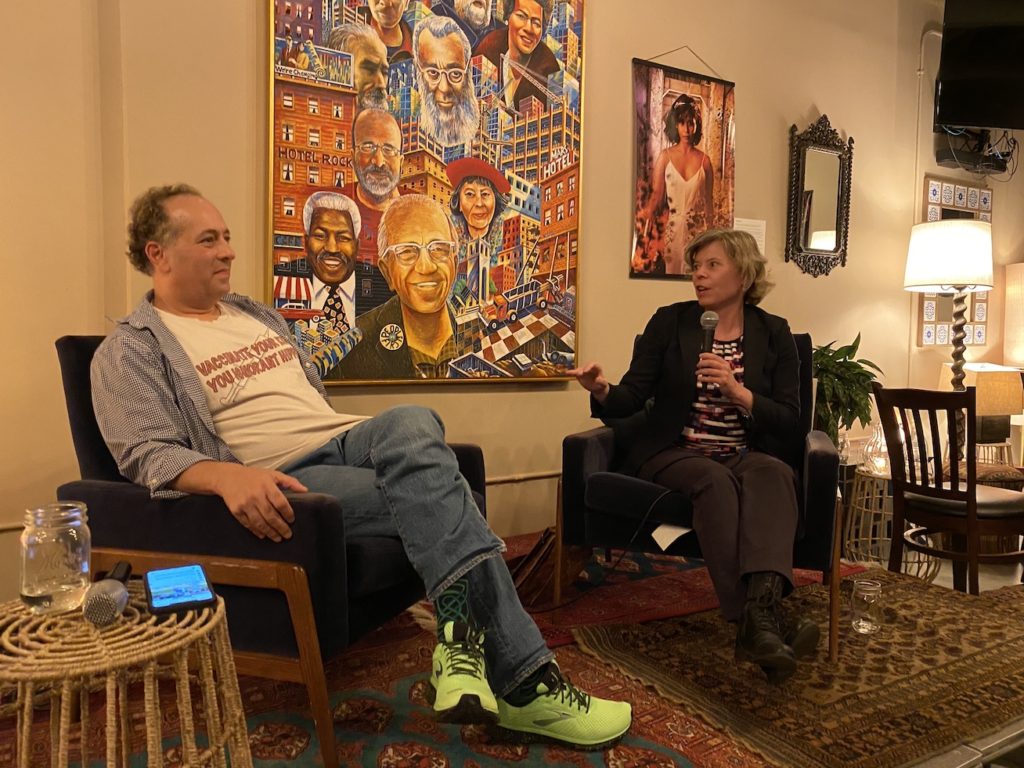
Dr. Michael Eisen and and Dr. Elaine DiMasi, who respectively ran for US Senate (CA) and US House of Representative (NY-1) , at Manny’s in San Francisco on October 30th, 2019
The setting was well suited for the speakers (Manny’s has held event for 17 out of the 20 Democratic candidates to the US Presidential election), and the two accomplished scientists shared many thoughts on their unsuccessful run. Needless to say, getting into the political arena is not an easy task, and it takes a lot of courage.
A man’s life is interesting primarily when he has failed — I well know.
For it’s a sign that he tried to surpass himself
— George Clemenceau
Of the wave of scientists who ran in 2018, few were elected, but it’s is hard to change a political machine that has been here for many decades on the first attempt.Trial, error, re-calibrate, try again. I hope to shortly provide a summary of lessons learned in a “Part 2” (I have a recordings of the event, but it’s low quality.)
While there is a lot of work done in the realm of science policy (how to inform our representative and make sure they make evidence-based decision)—groups such as the Union of Concerned Scientists, Engineers and Scientists Acting Locally (ESAL) or closer to me the Berkeley Science Policy Group and interesting programs such as the AAAS Science & Technology Policy Fellowships— very few scientists do engage politics frontally, as candidates.While other countries do have trained scientists at their helm (Angela Merkel from Germany and Xi Jinping from China are both doctors in Chemistry, and their respective term have been relatively successful up to this point), other countries not so much. Currently, Rep Bill Foster (D-Il), Steve Englebright (NY state assembly) and Dan Kalb (Oakland City Council) are scientists in public offices; Vern Ehlers and Rush D. Holt were the first physicists to be elected in congress (party did not matter so much, Ehlers being a Republican and Holt a Democrat; see College Professors Who Have Served in Congress – The Chronicle of Higher Education (June 2014) for a partial list)Interestingly, a few rising stars (or shining bright already!) of the Congress are professors (but not scientists): Katie Porter, Kirsten Sinema, Elizabeth Warren. Jess Phenix is a geologist who has ran for the House of Representative; she has still been unsuccessful, but her time might come.https://vis.sciencemag.org/midterm-science-candidates/(edit 11/8/2019: note that Olivier Ezratty published a post on “Do we need more scientists and engineers in politics“, quite thorough (in French.) And if you speak French there’s this podcast on Les sciences peuvent-elles aider la démocratie? (“Can sciences help democracy”) featuring Philippe Kourilsky (author of De la science et de la démocratie) – I was a bit disappointed: it’s mostly about scientists helping democratically elected leaders, not participating in it, but at least there’s some conversation. Continue reading
Threads
I’ve been using Twitter (@awojdyla) more frequently over the last 3 years, finding a lot value in this tool which allows to address a worldwide audience and reach out to people in a very effective way.
Twitter is a very strange medium, in that it can be extremely helpful to reach out to people (the six degrees of separation collapse to one, basically), but whose rules and purpose are hard to understand.
Here’s a few remarks on my experience, and some resources if you’re interested in engaging the tweet game! Continue readingOpen access – redux
Wow the levy is about to break on Open Access!
I’ve written a few times on Open Access (here, and here), and things have been changing at an incredible pace.A quick explanation about the topic: scientists share their research by publishing into very specialized journals. These journals then either charge a fee (>$10) for any reader to read a specific article, or as is more often the case, collect a subscription for an institution so that all of the people who work for this institution get complete access to a journal or a set of journal. The problem here is that the research submitted by the authors is often funded by public entities, which do not have the right to read the publications of other group freely (open access.) And the subscription fees have skyrocketed (e.g. in the order of $10 million for UC Berkeley.)But now, large entities are rebelling.The first salvo came from funding agencies, which require the papers to be made freely available, either by sharing the pre-prints (e.g. on arxiv) or by publishing in an Open Access journal (journals where the authors pay (usually $1000!) to get published, and where anyone can read.)Then came Germany, which reached an impass with the academic publisher Elsevier (one of the leading actors, together with Springer and Wiley) and decided not to pay for the racket (projekt DEAL). The issue has not been resolved yet and German researchers still do not have access to publications such as Cell (they can however directly contact the authors of the papers to get the papers — which actually sound like a good way to start off collaborations!)Next is the University of California (the whole UC system, with UC Berkeley, Los Angeles, … including Lawrance Berkeley National Lab and Los Alamos), who decided not reneged a deal with Elsevier. That’s a lot of people, for the most important public university system in the world. The impact can be quite dramatic…And soon will be the turn of Europe as a whole, with Plan S, starting next year…I can’t wait to see the science literature being unshackled!Still, don’t expect much changes in the conduct of science… “Authors do not publish to get read, they publish to get reviewed.”@BerkeleySciRev maybe you should dispatch someone to Elsevier office on Milviahttps://t.co/7lV8Ao9vIA pic.twitter.com/41RMRIqF8X
— Antoine Wojdyla (@awojdyla) July 11, 2019
How to promote diversity among scientists
This is a compendium of the things I’ve learned discussing the issue with other trained scientists and running an association with many young researchers. This is not meant to be a comprehensive list, but should help with the discussion. This discussion is primarily based on gender imbalance, but intersectionality applies (sometimes in weird ways), though the case is not as thoroughly documented.
(I wrote this initially for colleagues in my organization, since I couldn’t find a good resource. Here’s a bunch of additional resources – Ideas In Action – that have sprung out since. I’d be very grateful if you could point me to other concise lists)* *
*
While in a democracy it should be obvious that laws should be made by a legislative body with balanced gender, one might notice that the representative democracy in America is not very representative (only 20% of US representatives are women, while roughly half of US constituents are indeed women), while there is no reason other than history to explain this imbalance.Though science is not a democratic process (there is no expressed need for equal representation), similar historical factors are at play, and diversity or lack thereof can cancel any competitive advantage in terms of science (see Marie Hicks) and inclusivity of technology (see Caroline Criado Perez.) Alleged differencesSome people will go as far as to say that women are actually undesirable in science, based on alleged differences in mental capacity (see Saini), or more subtly in the “variance” of the population (men supposedly show more variance, therefore more chances of fringe cases; see Strumia, Fig. 2)
Similar arguments from the Charles Murray’s racist book Bell Curve are used to promote borderline anti-semitic ideas – see also Jordan Peterson.Ahh! intersectionality…. Role modelsIt is important in order to bring more balance to have role models to whom young scientist can identify, ideally more recent (and more diverse) than Albert Einstein or Marie Curie. The role models should be invited to give talks on site, but ideally *not in the context diversity* — it is important not to fall in the Bechdel test trap, since (i) you will lose a lot of speaker who are tired of having to repeat again and again the many hurdles they faced (ii) these interventions are usually not very interesting outside the TED talk format (iii) the point of role models is to inspire to do science because of it, not in spite of it (that’s what we have experimented with Series X). MentorsSimilar to role models but closer to the person, it is important to have mentors, that can come naturally or through some kind of pairing. These mentors can provide help and support, through sharing their personal experience, advices, and promoting their mentees through invitations to talks and workshops (that’s what we experimented with forum@MSD and forum@ESA). Be careful that mentors should promote their mentee, not undermine them – the mentor should acknowledge the accomplishments of the mentee, not their own. Provide a platformGiven the current imbalance in gender and diversity as whole, we must make sure that people from underrepresented groups get invited to the lab and are being able to leverage this position, through announcements and support. Success begets success, and the lab is a good reference when someone wants to get booked in other places. Given that diverse speaker are paradoxically more rare, a budget must be set aside to fly them here and/or for an honorarium (they should not work for free, especially when they are themselves not in a position of power.)Scientists at the lab usually yield considerable power in their own field, and they should be encouraged to seek and promote diversity when they look for invited speakers (best practices and guidelines can be useful here, e.g. never have an all-male panel or seminar series.) Promote scientists to leadership positionAcademia is a very competitive environment, and any differentiating factor is useful when it comes to apply to position, especially when women face external factors that gradually push them outside academia (Fig. 1) Encouraging women to pursue ancillary activities (association, EAA or ERGs), where they can learn leadership skills and strengthen their network, is seen as important, and the lab should further its support to extra-curricular activities. Work-life balanceWork-life balance is a vague concept that still has very real implications: while men do not face the discrimination related to their potential being pregnant, women do. The consequence of childbearing should be shared between the two parents, and initiatives such as (non-gendered) parental leaves are very useful to bridge the gap.Some policies to make it more convenient to raise children can be implemented, such as policies against emails past 5pm during week-ends, or enforcing one day per week without meeting, to allow for telecommuting (parking at the lab is nearly impossible when an appointment to a doctor pushes your commute later in the day.) Smash the patriarchyOftentimes I hear people (old white male) arguing about the current push for equality, dismissed as a PC coup and a threat to the freedom of expression, where they feel that *they* might become victims. This is baloney, and they should learn about the distinction between men (them) and patriarchy (the system), and not feel threatened – this is not about them, it is about all of us. They might have to change their habits coming from a position of power they rarely acknowledge, and learn to speak up when they see something wrong.This applies to men… but also to women. I seen many times over ReferencesPaul Walton: Gender equality in Academia – what we have learntAngela Saini, Inferior: How Science Got Women WrongDaniel Kahneman, Thinking, fast and slowKatie O’Neal, Weapons of Math Destruction: How Big Data Increases Inequality and Threatens DemocracyMarie Hicks, Programmed Inequality: How Britain Discarded Women Technologists and Lost Its Edge in ComputingNearly half of US female scientists leave full-time science after first child, Nature, 19 February 2019https://www.nature.com/articles/d41586-019-00611-1?fbclid=IwAR2unznTjBTUUTlkEQJTiFmV6ZOxQUxTmhFQw_5j48r6YFXnHjoDoUEH2wMCaroline Criado Perez, Invisible Women: Exposing Data Bias in a World Designed for Men
https://www.theguardian.com/lifeandstyle/2019/feb/23/truth-world-built-for-men-car-crasheshttps://www.insidehighered.com/news/2019/03/06/new-study-nih-funding-says-women-get-smaller-grants-menhttp://berkeleysciencereview.com/inclusive-mcbhttp://antoine.wojdyla.fr/blog/2017/10/20/sexism-in-academia/OSA and SPIE Professional Conduct Research Assessing And Addressing The Level Of Harassment At Scientific Meetings(edit March 9th, 2020)The researcher journey through a gender lens – Elsevier (March 2020)




